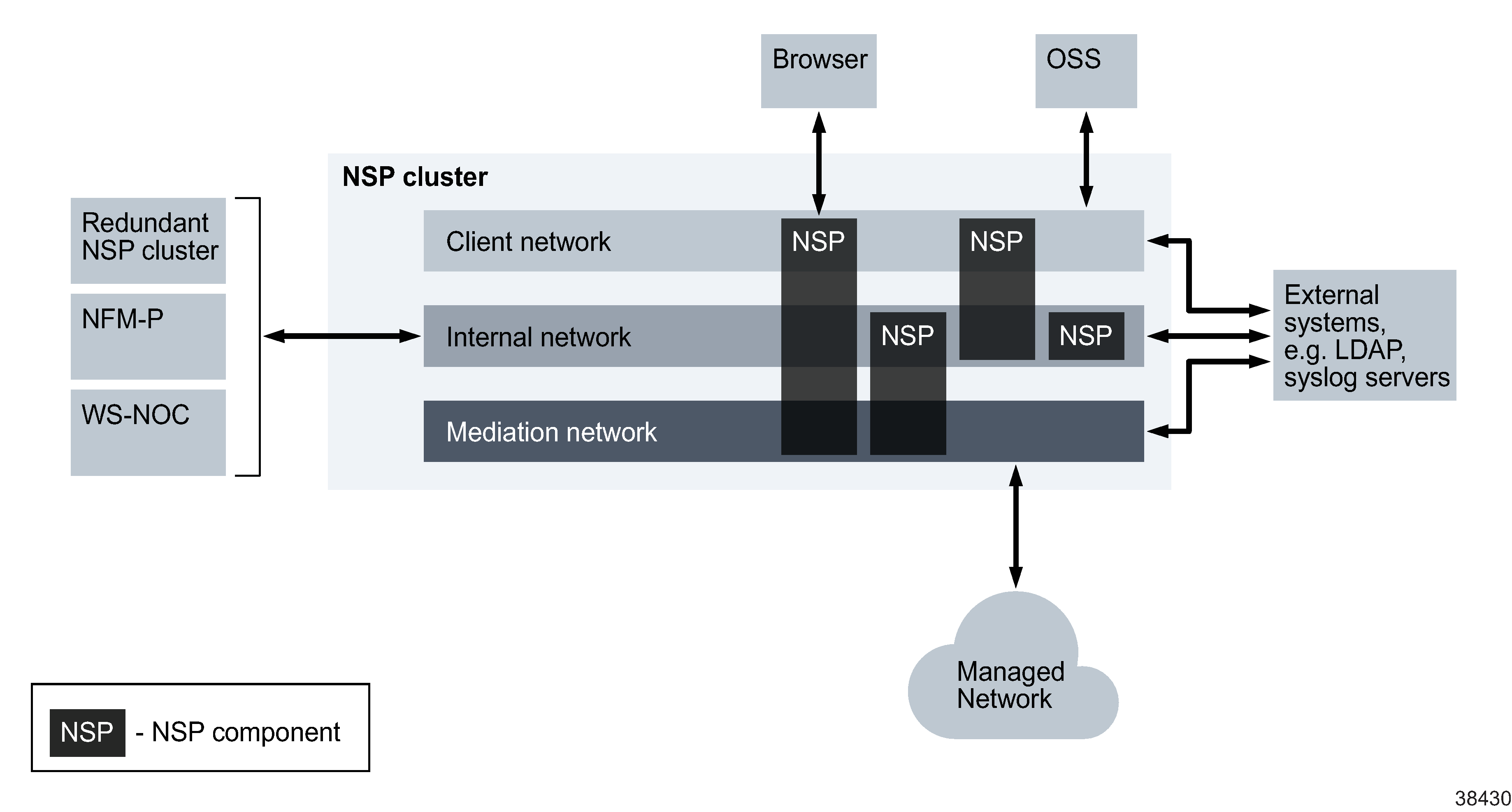Overview
NSP networking options
The NSP has various internal and external communication requirements. Unless otherwise configured, an NSP system uses one management network for all communication. For greater security, the NSP supports the use of multiple interfaces on each component that define separate networks for the client, mediation, and internal traffic, as required.
Note: The NSP supports the use of IPv4 and IPv6 in the client, internal, and external networks; see “IP version support” in the NSP Installation and Upgrade Guide for more information.
An NSP component may communicate over one or more of the networks, depending on the services that the component provides. For example, a component that communicates only with other NSP components uses only the internal network; a component that provides mediation and a client API uses all three networks.
During system deployment, you can enable the use of separate networks by specifying IP addresses for the client, mediation and internal traffic, as required. If you opt to use only one interface per component, only one network is used.
The following are the networks that you can establish in the NSP management domain:
The following figure shows a high-level view of the NSP multi-interface implementation.
